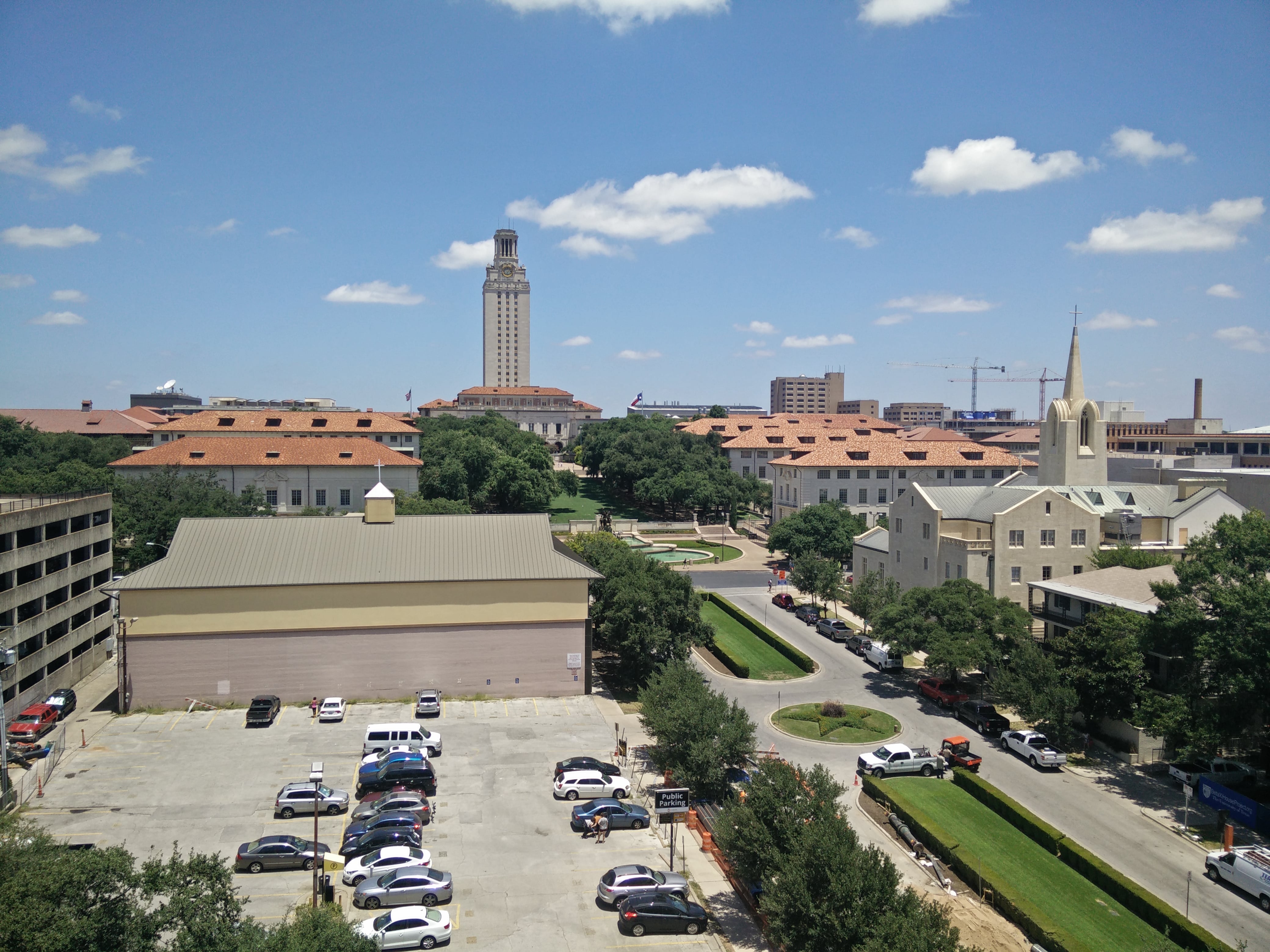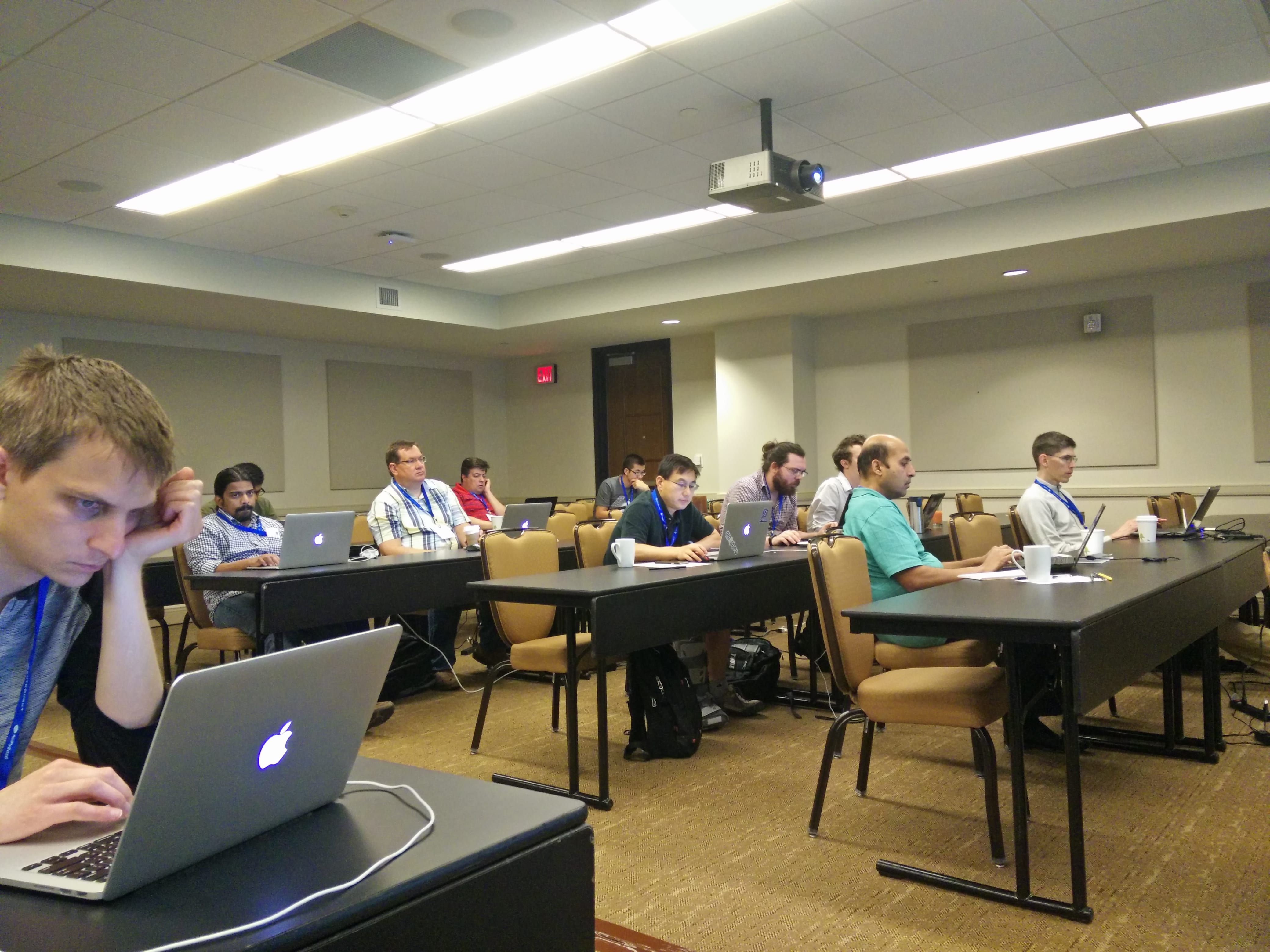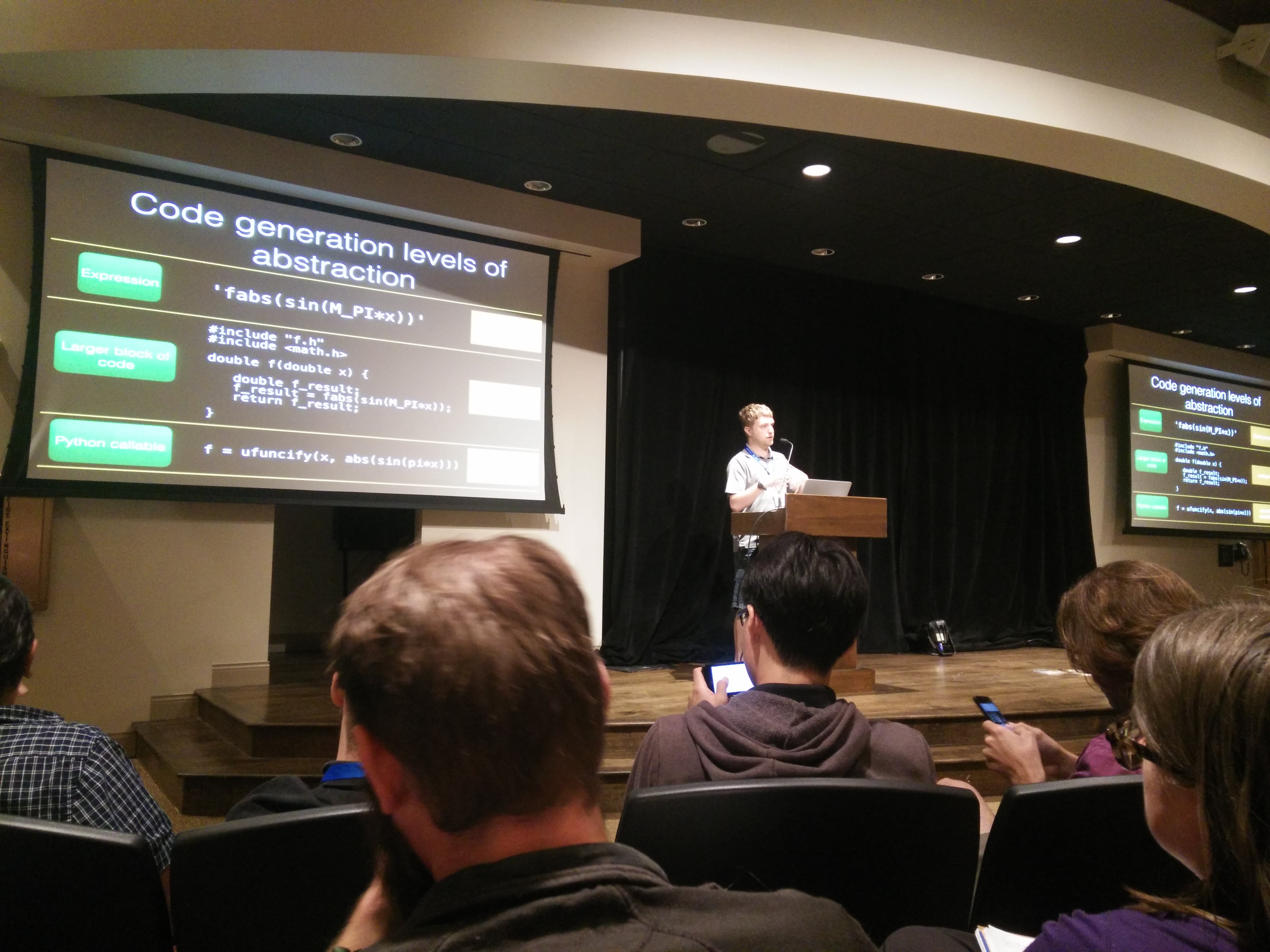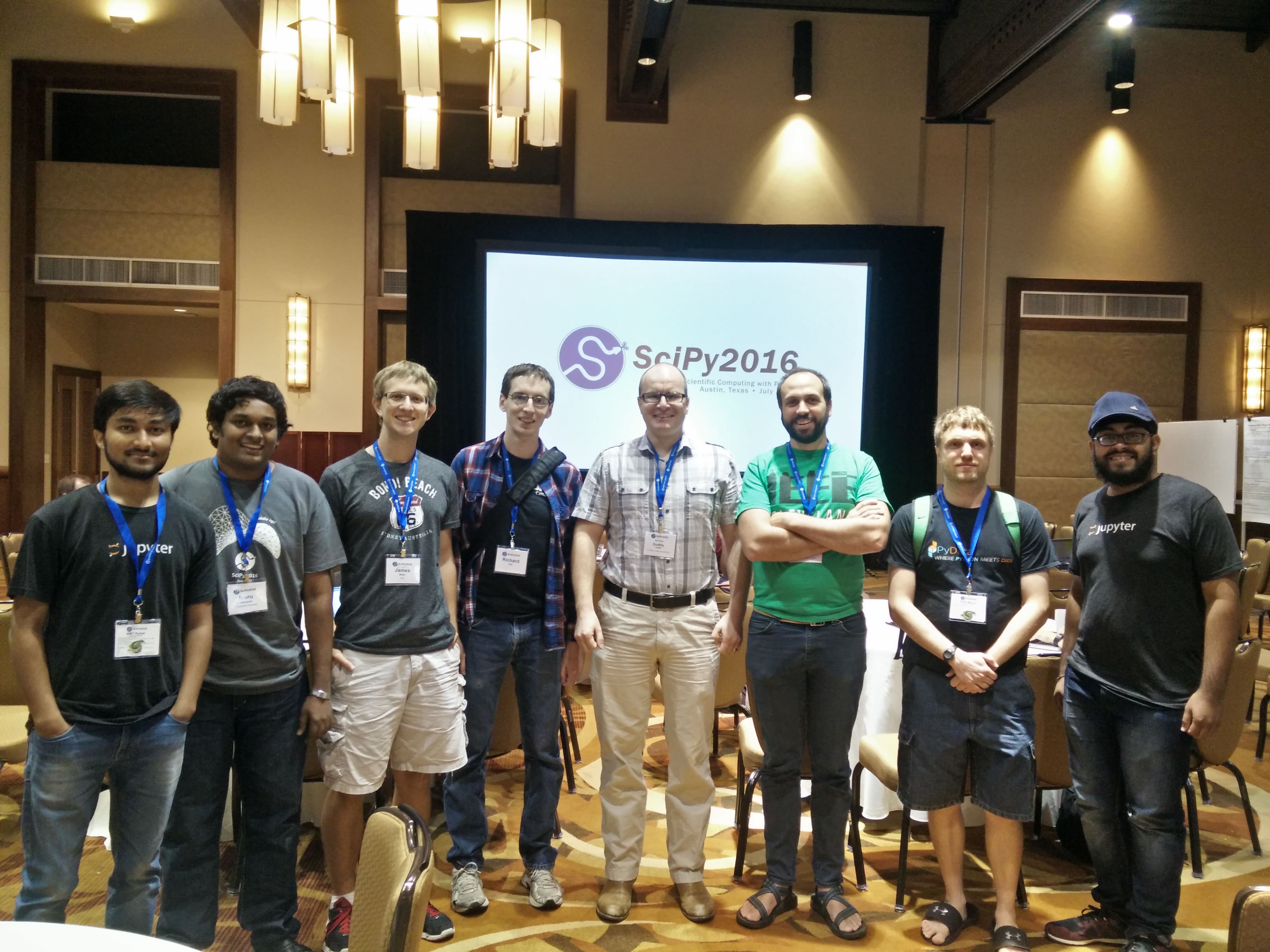SciPy 2016 : Journey to the West ✈️
Conference · Scientific Computing · PythonSciPy 2016 was held in University of Texas at Austin like every other year. We reached AT&T Executive Education and Conference Center on the Night of 9 July after a 30+ hour journey from New Delhi to Austin with layovers in Germany and Newark. The conference was schedule to start on 11 July, so we had a day to fix our sleep cycle and jet lag. We visited a couple places (Barton springs and Capitol) on 10th July, with Aman, Isuru who happend to be staying in adjacent rooms. Harsh joined us at Capitol.In the evening we met Aaron and Ondrej for the first time, even though we have worked with each other for over an year. Here is a picture of UT Tower from the window of our room.

Day 1 & 2 (Tutorial)
The most important day of the conference for us, as we were supposed to deliver a tutorial on SymPy. Here is a picture of the Tutorial room:

The tutorial started at about 8:10 AM, due to slight delay because of projector issues, I am still waiting for the day when I will find a projector that just works! Anyways, the tutorial introduction was started by Aaron and Ondrej, then we took over with notebooks. Here is the video:
------
Day 3, 4 & 5 (Conference)
Day 3
The conference started with a Keynote from Brian Gragner, the maintainer of Jupyter Project. I was very excited for this keynote as I could recall a lightning talk from him in the last SciPy, which was pretty good. In this keynote he talked about various aspects of the project jupyter and introduced the new project he was working on named altair, a Declarative statistical visualization library for Python.

Day 4
The Day 2 started with a Sponsor and Scholarship Recipient Breakfast, where I met some of the other people who were awarded Financial Aid and also who were in the panel of selecting Finacial aid recipients. I am thankful to Eric Ma and Scott Collis for awarding me the financial aid for attending the conference. Later on the Day, we had the keynote by Andreas Klöckner, He works on high-order numerical methods for the simulation of wave problems as well as issues in high-performance scientific computing that relate to bringing these methods to life on large-scale parallel computers. Aaron also had his talk on the same day. He introduced the code generation abilities of SymPy. Code generation is useful across a wide variety of domains. SymPy supports generating code for C, Fortran, Matlab/Octave, Python, Julia, Javascript, LLVM, Rust, and Theano. The code generation system is easily extensible to any language.

Day 5
The Day 5 was our last day of the conference, as I had to leave for an another conference in the NewYork (PyGotham), the next day. It started with the Keynote by Hanna Wallach. She is a Senior Researcher at Microsoft Research New York City and an Adjunct Associate Professor in the College of Information and Computer Sciences at the University of Massachusetts Amherst. She talked about Machine Learning for Social Science. In the evening, Ondrej and Isuru had a talk, where they introduced SymEngine. Ondrej talked about the internals and interface of SymEngine and then Isuru showed some interesting benchmarks of comparing SymEngine with other computer Algebra Systems like Mathematica, Maple, GiNaC and even SymPy.
Concluding Note
SciPy was an amazing conference, I was overwhelmed by the quality of talks and workshops. The best part was meeting all the awesome people behind some of the greatest projects like SciPy, Numpy, pandas, matplotlib, etc. There is always so much to learn from conferences like these. I also met Jill Cowan, who I think is the one person, without whom the conference would not have been possible, she manages a lot of things at once, which is incredibly hard to do. I also met Prabhu Ramachandran, who was the co-chair of the conference, he is an extremely knowledgeble guy, I had the privilege of meeting him twice, once in Pune and then in SciPy itself. Thanks to Enthought for putting up the energy to organize such an huge conference. Looking forward to next SciPy!
